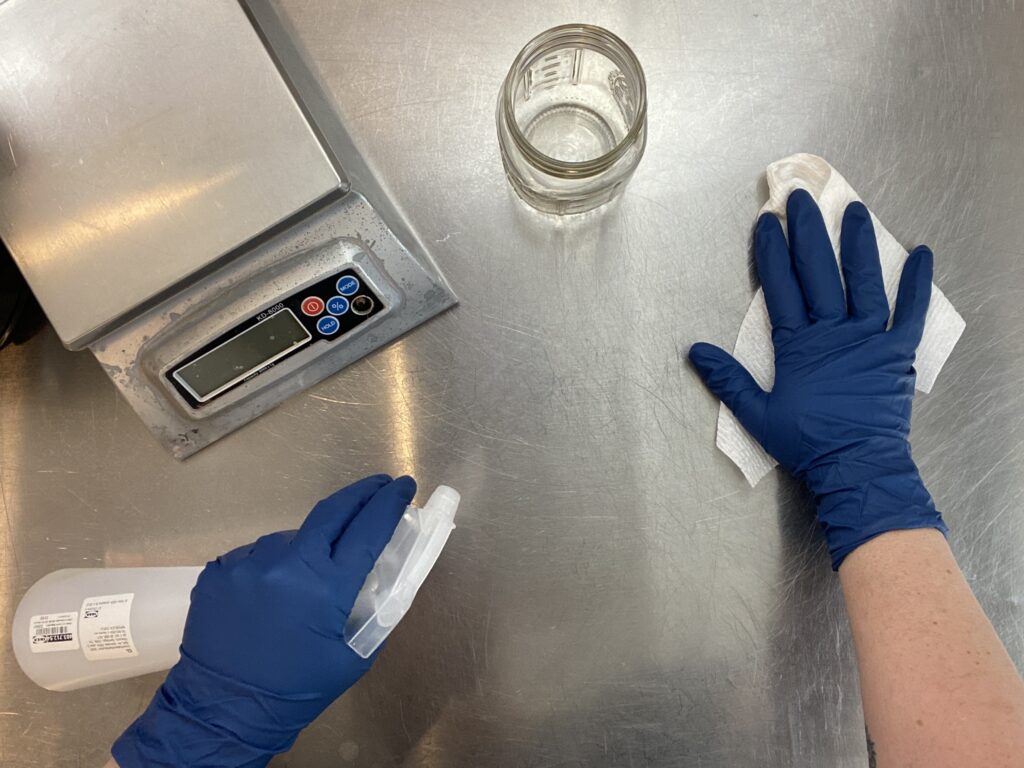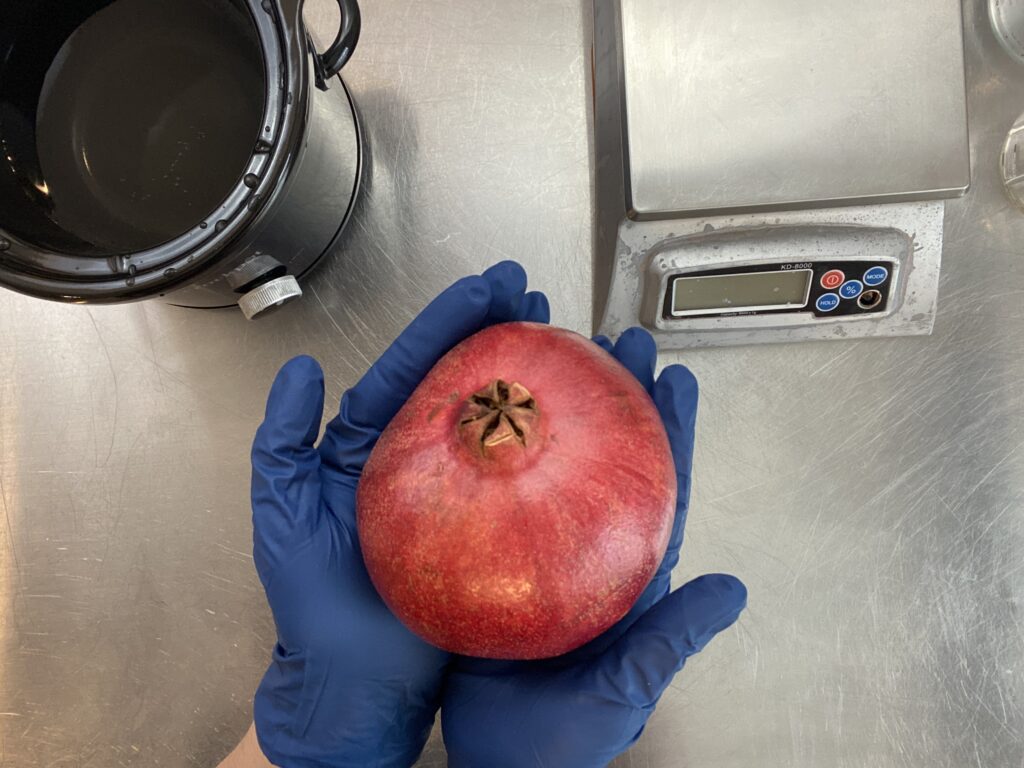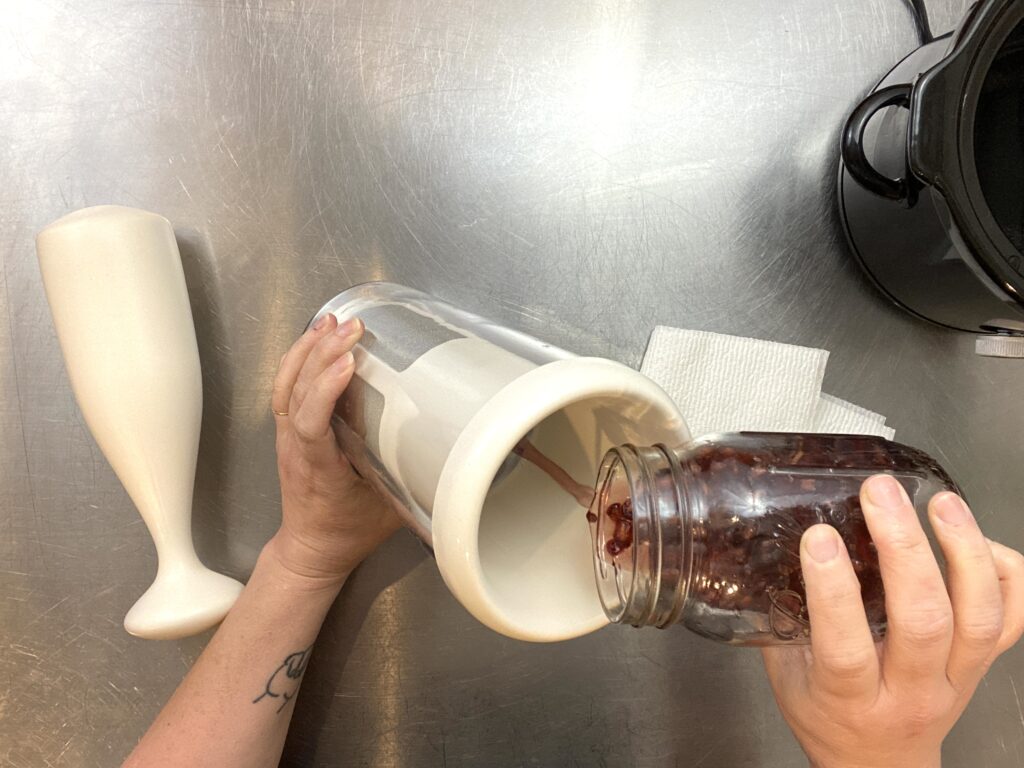This year we really wanted to take some time to focus on natural plant additives for use in cosmetics. We’ve talked about cold oil infusions, and hot oil infusions, but what if your formulation only has a tiny amount of oil? Are there other ways to incorporate natural additives?
Yes! There are quite a few ways, and the first non-oil infusion we will discuss are glycerites, a very underutilized type of tincture, which uses glycerin to extract all kinds of plant matter. You can even use fresh fruit which might otherwise be impractical to incorporate into handmade cosmetics. Not only do glycerites provide amazing color and scent, they are humectants, which make them a superb choice for gorgeous skin and hair.
Pomegranate is a great addition to any skincare routine! It is full of antioxidants and can help skin appear younger by reducing the appearance of wrinkles. Pomegranate is also full of vitamin C to help brighten your complexion, tannins to soothe skin, and ellagic acid to help neutralize free radicals. It’s juicy nature also makes it an easy introduction to glycerites!

The type of glycerin we use for glycerites is vegetable glycerine–not glycerine soap. You can also find glycerin listed as glycerol by some suppliers. Glycerin is a type of sugar alcohol and, like many sugars, it helps to draw in moisture. In skin and hair care it can be used to soothe and condition and can act as an emollient. Of course too much glycerin can leave a sticky feeling on skin so we should be mindful of that when formulating!
One of the most important thing when creating glycerites is sanitation! Because the plant material we are incorporating is FRESH, there will be a certain amount of water content in our final product. This means that we need to keep our standards high to prevent contamination. Make sure you properly sanitize your work area, jars, utensils and other tools!



First I prepare a water bath. I have seen many glycerite how-tos skip this part and instead use cold infusions. Because glycerin is a weaker solvent than alcohol and water, in my opinion, a glycerite really needs to be heated to be truly effective. Using a small crockpot is a great way to achieve this! The warm setting gets to about 160°F which keeps the liquid at about 140°F-120°F, perfect for our needs!
Next I’m going to get my fruit ready! I want to make sure that I only use healthy plant matter. If I see anything that looks bruised I discard it! Also keep in mind that glycerites have a much shorter shelf life compared to alcohol tinctures which can be kept indefinitely! Glycerites are stable for 1-2 years (which, ok, that is a pretty long amount of time!), but if you don’t think you can use it within that time frame, then it’s better to make a small batch.



To prevent mold we are going to keep our glycerine content to at least 60% by weight. I can count on some of the water evaporating during the heat phase, plus some of my plant material will be discarded, so I calculated my glycerite to be 55% glycerin and 45% pomegranate. I will double check the weight at the end of the cook and can always add more glycerine if I’m concerned about any discrepancies.
In my mason jar I weighed 90 grams of pomegranate seeds. To make sure the glycerin came into contact with as much pomegranate as possible, I mashed the seeds up and tried to pop as many of them as I could.



To my mashed seeds, I added 110 grams of vegetable glycerin. After a gentle stir, I placed the mason jar into the crock pot water bath and let it sit for about 8 hours.
If I hadn’t been using fresh fruit, and if I didn’t need some of the water to evaporate, I could have added a lid to the mason jar while it cooked. I could have also placed a lid if I had wanted to capture the essential oils of something like lemon balm or peppermint. As it was, I didn’t add a lid. Since my workshop is a child-free and pet-free zone, and there was no worry about the safety of leaving this for several hours. If you have concerns about abandoning your glycerite for hours, you could use the true 60/40 calculation, add a lid, and let it go through the heat process with zero worries!




That evening it was time to pull the jar and see the results! I carefully wiped any excess water away to make sure it didn’t drip into my glycerite.
I used a really cool tool called a vegan milker! Sadly this item seems to be currently unavailable on Amazon, but you could also use the classic cheesecloth (which I’ve shown before), a fine mesh sieve, or a nut milk bag (feel free to giggle). I like the vegan milker because I can mash and strain in one go, but it’s definitely not necessary and I’ve happily used cheesecloth for years!



Basically the goal here is to make sure you squeeze out as much of the liquid from the solids as possible. If you use a cheesecloth and need to squeeze the marc (the solid plant material), make sure that your hands are washed and you’re wearing clean gloves. Since I didn’t have to touch the product, I didn’t wear gloves and just used hand sanitizer. I’m going to go ahead and call myself out here–I definitely should have put gloves on! Again, I cannot stress how important sanitation is, so do as I say, not as I do. (I apologize for being a bad example in these last few pics!)



The total weight of the final product was 183 grams, which had a pre-cook weight of 200 grams, resulting in a loss of 8.5% water and solid matter. That means my glycerin makes up 60% of the final weight of my glycerite, which was my end goal! You can also add up to 20% of 80-proof alcohol to glycerites to improve their shelf life!

How will I use this glycerite you might ask? Well one of the ways I used it was in shampoo bars using our Shampoo & Conditioner Bar guide! Pomegranate helps stimulate the circulation and strengthen the hair follicles, so it made a great addition to hair care. But I also wanted to incorporate this pomegranate glycerite into a leave-on product, so I used it in this ultra light and lovely face cream I’ve been working on. The formula is still in its test phase, but I added it to Patreon this month to see how they liked it!
What will you make with your glycerites?


